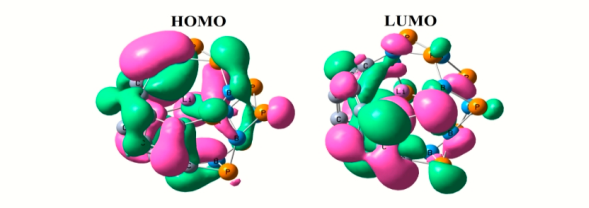[1] A. Herzog, M. Tatsutani, A HYDROGEN FUTURE?, Natural Resources Defense Council. issue paper: november (2005).
[2] K.T. Busby, Seeking Sustainability: Adopting Sustainable and Renewable Energy Sources to Create a Maintable World, INQUIRIES Journal. 4 (8) (2012) 1/1 .
[3] J. Zhou, Q. Wang, Q. Sun, P. Jena and X. S. Chen, Electric field enhanced hydrogen storage on polarizable materials substrates, .107(7) (2010) 2801–2806.
[4] B. Schreiner, H J. Reinhardt, Use of industrial gases in petrochemistry, Hydrocarbon Processing. 87(12)(2008).
[7] T. H. Tran and V. T. Nguyen, Copper Oxide Nanomaterials Prepared by Solution Methods, Some Properties, and Potential Applications: A Brief Review, International Scholarly Research Notices.2014 (2014), 14 pages.
[8] C. L. Quéré, M. R. Raupach, J. G. Canadell, G. Marland et al, Trends in the sources and sinks of carbon dioxide, Nature Geoscience. 2(2009) 831 – 836.
[9] S. Santucci, S. Picozzi, F. Di Gregorio, L. Lozzi, C. Cantalini, L. Valentini, J.M.Kenny, B. Delley, NO and CO gas adsorption on carbon nanotubes: Experiment and theory, J. Chem. Phys. 20 (119) (2003) 10904-10910.
[10] T.C. Dinadayalane, J. Leszczynski, Remarkable diversity of carbon–carbon bonds: structures and properties of fullerenes, carbon nanotubes, and grapheme, StructChem. 6(21) (2010)1155–1169.
[12] T.C. Dinadayalane, A. Kaczmarek, J. Lukaszewicz, J. Leszczynski, Chemisorption of Hydrogen Atoms on the Sidewalls of Armchair Single-Walled Carbon Nanotubes, J.Phys.ChemC. 20(111) (2007) 7376–7383.
[13] A. Kaczmarek, T.C. Dinadayalane, J. Lukaszewicz, J. Leszczynski, Effect of tube length on the chemisorptions of one and two hydrogen atoms on the sidewalls of (3,3) and (4,4) single-walled carbon nanotubes: A theoretical study, Int. J. Quantum Chem.12(107) (2007) 2211–2219.
[14] T.C. Dinadayalane, J. Leszczynski, Stone–Wales defects with two different orientations in (5, 5) single-walled carbon nanotubes: A theoretical study, Chem.Phys.Lett. 434 (2007) 86–91.
[15] T.C. Dinadayalene, J.S. Murray, M.C. Concha, P. Politzer, J. Leszczynski, Reactivities of sites on (5,5) Single-walled carbon nanotubes with and without a stone-wales defect, J.Chem.Theor .Comp. 6 (2010) 1351–1357.
[16] F.Fallahpour, M. Nouraliei, S.S. Gorgani, Theoretical evaluation of a double–functional heterogeneous nano–sensor, Appl. Surf. Sci. 366 (2016) 545–551.
[17] P. A. Ghamsari, M. Nouraliei, S.S. Gorgani, DFT simulation towards evaluation the molecular structure and properties of the heterogeneous C16Mg8O8 nano–cage as selective nano–sensor for H2 and N2 gases, Journal of Molecular Graphics and Modelling. 70 (2016) 163–169.
[18] S.S. Gorgani, M. Nouraliei, S. SoleimaniGorgani, Heterogeneous C16Zn8O8 nanocluster as a selective CO/NO nanosensor: computational investigation, Int. J. Environ. Sci. Technol. 13 (2016) 1573–1580.
[19] D. Golberg, Y. Bando, Octahedral boron nitride fullerenes formed by electron beam irradiation, Appl.Phys.Lett. 73 (1998) 2441–2443.
[20] H. Omidvar, S. Goodarzi, A. Seif, A.R. Azadmehr, Influence of anodization parameters on the morphology of TiO2nanotube arrays, Super.lattice.Microst. 50 (2011) 26–39.
[21] S.K. Jain, P. Srivastava, Structural stability of nitrogen-doped ultrathin single-walled boron nanotubes: an ab initio study, Comp. Mater. Sci. 50 (2011) 3038–3042.
[22] D.C. Pestana, P.P. Power, Nature of the boron-phosphorus bond in monomeric phosphinoboranes and related compounds, J. Am. Chem. Soc. 113 (22) 8426–8437.
[23] V. Ferreira, H.W. Leite Alves, Boron phosphide as the buffer-layer for the epitaxial III-nitride growth: A theoretical study, J. Crys. Grow. 310(17) (2008) 3973–3978.
[24] H. Kawabata , H. Tachikawa, DFT Study on the Interaction of the Smallest Fullerene C20 with Lithium Ions and Atoms ,Journal of carbon research. 3(2) (2017) 15.
[25]E. Cuestas , P. Serra, Localization of the valence electron of endohedrally confined hydrogen, lithium and sodium in fullerene cages, Int. J. Mod. Phys. B. 30(1650055) (2016)15 pages.
[26] C.H. Suresh, T. L. Lincy, N. Mohan, R. Rakhi, Aromatization Energy and Strain Energy of Buckminsterfullerene from Homodesmotic Reactions, J. Phys. Chem. A 119, 25(2015) 6683-6688
[27] M.W. Schmidt, K.K. Baldridge, J.A. Boatz, S.E. Elbert, M.S. Gordon, J.H. Jensen, S. Koseki, N. Matsunaga, K. Nguyen, S. Su, T, Windus, M. Dupuis, J. Montgomery Jr, General atomic and molecular electronic structure system, J. Comp. Chem. 14(1993)1347-1363.
[28] A. E. Reed, L. A. Curtiss, F. Weinhold, Intermolecular interactions from a natural bond orbital, donor-acceptor viewpoint, Chem. Rev. 88(1988) 899-926.
[29] S. Li, Semiconductor Physical Electronics, Second ed, Springer. USA. (2006).


